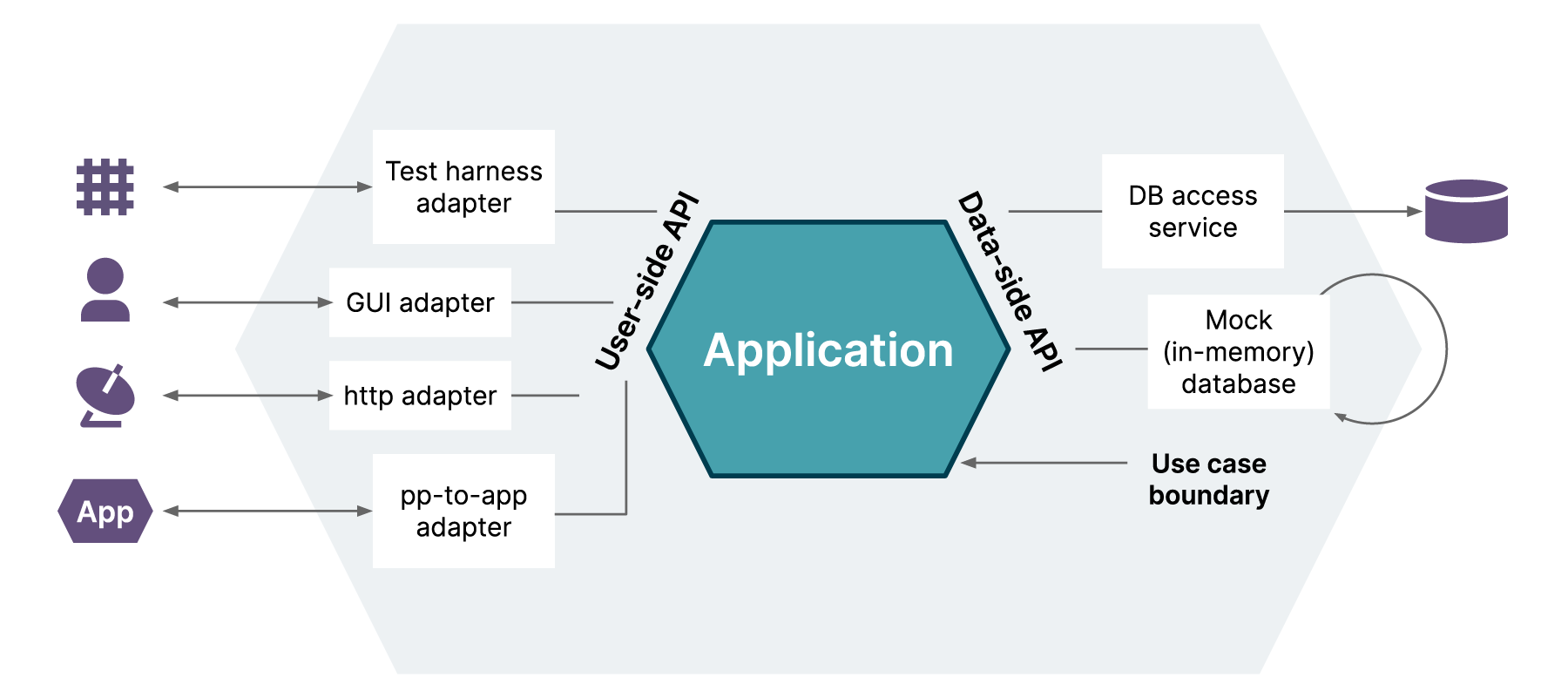Hexagonal architecture, also known as ports and adapters architecture, is a software design pattern that separates the application logic from the external dependencies such as databases, user interfaces, and other services. This allows for greater flexibility and modularity in the application, making it easier to maintain and extend over time.
In a hexagonal architecture, the application is organized around the core business logic, which is surrounded by a set of ports and adapters that connect the application to the outside world. The ports and adapters act as interfaces between the application and external systems, allowing the application to be easily integrated with other services or technologies.
The core of the application contains the domain logic, which encapsulates the business rules and entities. This core does not depend on any specific technology or framework, making it highly portable and easy to test. The ports and adapters are responsible for providing the external interfaces that allow the application to communicate with the outside world. The ports are the entry points into the application, while the adapters are responsible for translating data between the application and external systems.

I took this image from this thoughtworks blog post
In this architecture, the business logic resides in the center, isolated from the external systems and frameworks. The inbound ports represent the entry points into the system, where external requests are received and adapted to the domain objects. The outbound ports represent the exit points from the system, where domain objects are adapted to external requests and sent out. The adapters in the inbound and outbound ports are responsible for translating the external requests and responses into domain objects and vice versa. The infrastructure layer contains all the external systems and frameworks used by the system.
Example of Hexagonal Architecture
Consider a simple e-commerce application that allows users to browse and purchase products online. The application consists of a user interface, a database for storing product information and order data, and a payment processing service.
In a hexagonal architecture, the core of the application would contain the business logic for managing products, orders, and payments. This core would be surrounded by a set of ports and adapters that connect the application to the user interface, the database, and the payment processing service.
The user interface port would be responsible for handling user input and displaying output to the user. This port would define a set of interfaces that the user interface adapter would implement, allowing the application to be easily integrated with different user interface technologies such as web, mobile, or desktop applications.
The database port would provide a set of interfaces for storing and retrieving product and order data. The database adapter would implement these interfaces, allowing the application to be easily integrated with different database technologies.
The payment processing port would provide a set of interfaces for processing payments. The payment processing adapter would implement these interfaces, allowing the application to be easily integrated with different payment processing services.
The core of the application would not depend on any specific technology or framework, allowing it to be easily tested and ported to different environments. The ports and adapters would provide the necessary interfaces to allow the application to communicate with the outside world, making it flexible and extensible over time.
Benefits of Hexagonal Architecture
- Separation of concerns: Hexagonal architecture separates the application logic from external dependencies, allowing for better separation of concerns and greater modularity in the application.
- Testability: The core of the application in a hexagonal architecture is highly portable and easy to test, as it does not depend on any specific technology or framework.
- Flexibility: The ports and adapters in a hexagonal architecture provide the necessary interfaces to allow the application to communicate with external systems, making it flexible and adaptable over time.
- Maintainability: Hexagonal architecture makes it easier to maintain the application over time, as changes to external systems or dependencies can be easily integrated through the ports and adapters.
- Scalability: The modular nature of hexagonal architecture makes it easier to scale the application as needed, by adding or removing ports and adapters as necessary.
Conclusion:
hexagonal architecture is a powerful design pattern for creating flexible, modular, and maintainable applications. By separating the core application logic from external dependencies, hexagonal architecture allows for greater flexibility and scalability over time.